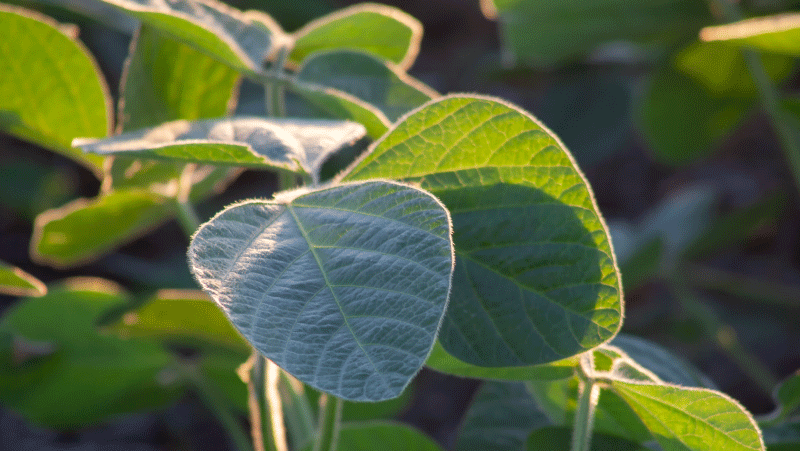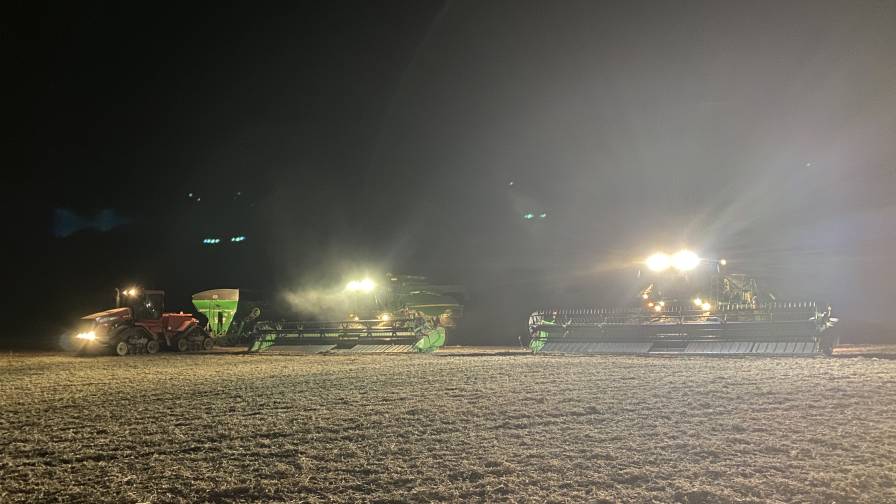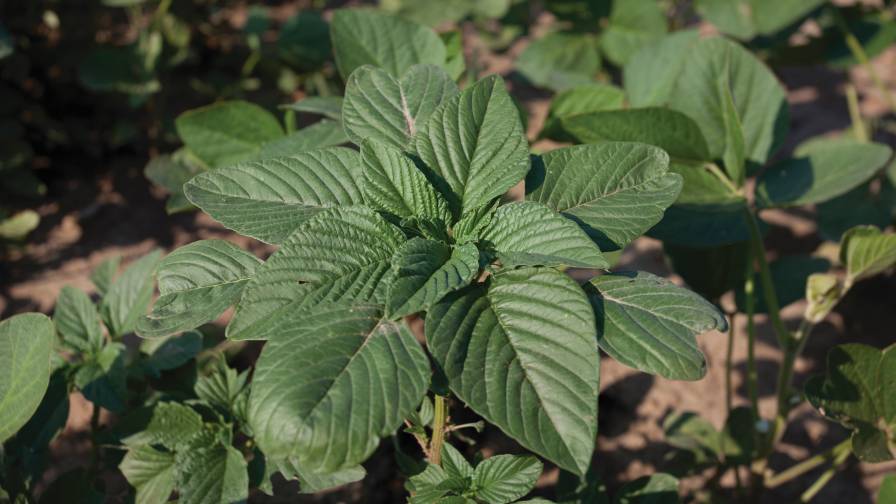How to Attack Weed Resistance, Auxin Failures in ’23
Camille Lambert is the decision-maker and bookkeeper for her family’s 4,500-acre corn and soybean farming operation in Utica, KY.
She has noticed that people are more hesitant to pull the trigger on herbicide purchases this winter, as supply chain concerns from 2022 have abated. One thing she and others with whom we spoke have also noticed is more proactive strategizing around residual products as weeds (namely, waterhemp in her region) continue to worsen.
“We’ve kind of learned our lesson,” Lambert, FMC Technical Service Manager, tells CropLife® magazine, as she turned her camera around to show a table spread out with farm bills she’s been busy paying. “If we don’t keep these weeds from ever coming up, then our problems increase for three, five, seven more years. And so, I think a lot of people are finally starting to really say, OK, I know I’m going to spend more money up front, but it’s going to make me more money in the long run.”
According to research by weed scientist Stevan Knezevic at the University of Nebraska, delaying weed removal beyond the start of the identified period for weed control will cost a producer an average of 2% in yield loss per every leaf stage of delay in both corn and soybean.
BASF has become known for Operation Weed Eradication, the industry-wide initiative it spearheaded that drives a zero-tolerance, eradication mindset toward weeds.
After it’s go-time and planting is done, herbicide options become limited, Brady Spangenberg, Director of US Crop Marketing at BASF, tells CropLife. “If you’re waiting to spray herbicide until you can see weeds, that germination process is already underway, and the bigger the weed is, the harder it is to control.”
A planned application for weeds 3 inches or less is going to be significantly more effective, both for controlling the entire population and preventing weed resistance, than waiting until weeds reach 5 or 6 inches in height, he says.
“We recommend that the grower has a discussion with their retailer to evaluate what their needs are at all the critical spray timings for herbicides,” Spangenberg says, noting that these may include BASF’s Sharpen herbicide for burndown, and for a residual herbicide, Zidua PRO in soybeans or Verdict or Armezon PRO in corn.
Lambert likes to chase the planter with the preplant/preemerge herbicide Authority Edge from FMC, then come back 21 to 28 days later to spray an overlapping residual product, like Anthem Maxx herbicide. “The whole goal is to get to canopy closure. Shade is the best weed control method.
“I feel like the industry has pushed farmers to spray preemerge and a lot of farmers have taken that as, I need to spray, then later plant,” and sometimes two to three weeks passes before that happens, fields get rained out, and the residual has worn off. “I like to honestly chase the planter. So, my dad will plant, and then my husband will come right after and spray and by doing it that way, you’re making sure your residual holds until you need to come back and do your postemerge program in season.”
FMC’s Lambert and Dr. Bryan Young, Professor of Weed Science at Purdue University, point out large-seeded weeds are becoming more problematic, as programs people have relied upon including Group 14 and 15 chemistries target small-seeded weed species such as waterhemp and marestail. Large-seeded broadleaves such as velvetleaf, morningglory, and cocklebur are starting to resurface, he says.
“By default, we’ve let some of the large-seed broadleaves take control a little bit more,” Young tells CropLife.
In 2022, Young heard more cases of dicamba and 2,4-D not working as well on target weed species like waterhemp. “We need to be lookout in 2023 for fields that have failures with auxin herbicides, and how we approach that differently. We need to be sure we’re diligent, spraying at the right time and the right rate, and using good application methods. More than ever, read and follow all label instructions,” he advises, noting that dicamba cutoff dates are now June 12 in Iowa, Indiana, and Illinois, and June 20 in South Dakota.
The earlier cutoff dates emphasize the need for early season weed management, and the need for residual herbicides early with these post applications. “If you’re applying June 12th with dicamba, make sure you have a residual herbicide with it if you don’t have canopy closure, which in most cases you won’t,” Young says.
All in all, weed resistance is going to be a greater issue in ’23 than ’22, he assures. “As we move further away from glyphosate, application methods matter … Once you move away from glyphosate, all the other herbicides we’re spraying are at the marginal edge of their activity. We’re asking them to work as much as possible every time we apply it.”
Trading Xtend For Enlist
Will Tubbs, Corteva Agriscience Market Development Specialist, has been around custom application his entire life — growing up, his dad worked at an Iowa retailer as an agronomy manager. He agrees that people are more proactive than he’s ever seen before when it comes to weed management.
Yet, every June, when it’s time to spray post-emergence in Iowa, Tubbs gets the same question: “It’s really hot and it hasn’t rained in 10 days — should we even throw our residual in? Because we don’t know if it’s going to get activated.” And 99% of the time, he says, those who choose not to include a residual come back at the end of the year and relay that they did, in fact, catch a rain and find that fields they did spray were noticeably cleaner at the end of the season.
“What I try to tell people is, when we do get to that point of the year, it’s always tough. I never want to plan on failure. I want to plan on mother nature going our way. If we don’t have (residuals) out there, we’ll never get it to work for us. And that’s only going to make our weed issues worse,” Tubbs says.
In Iowa, Corteva’s Enlist E3 soybeans are now being planted on more acres than any other soybean trait, Tubbs says, as growers in the state often prefer the genetics, lack of cutoff date, weed control, and flexibility of the 2,4-D choline-based system.
FMC’s Lambert has seen similar trends in Kentucky. “Volatility is a major problem that we face, because we have a lot of susceptible crops such as tobacco, grapes, vegetables, and fruits. I think the auxin technology in general, people are starting to pull away from, because we can be just as successful — or even more successful — when we use strong residual-type products, rather than relying on postemerge treatments such as dicamba or 2,4-D.”
The changing weed spectrum has also contributed to the switch in some of the chemistries, Tubbs says. “Weeds in the past and how (growers and applicators) attacked a situation are completely different than today. More and more people now realize they need at least two products in that tank to take down weeds, instead of just one,” to reduce the risk of developing resistance.
Furthering this goal, Corteva is planning a limited launch in the U.S. of a new postemergence corn herbicide, Kyro, for the ’23 season. It will be the first product on the market to combine the active ingredients acetochlor, topramezone, and clopyralid into one premix.
“To be clear, we’re not moving away from Resicore XL. In my mind, it’s a differentiated option,” Tubbs says, explaining its HPPD that sets Kyro and Resicore XL apart. Topramezone replaces mesotrione that is in Resicore XL, providing more grass control.
Looking to ’23, Tubbs says his biggest recommendation is to be proactive. “Look into overlapping residuals. Scout early, spray small weeds. Don’t let them emerge — and have a plan.”
Kip Jacobs, Technical Service Manager at UPL, recommends the practical step of carefully recording in a notebook what worked and what didn’t on your farm throughout the season, so that you can head into the next season ready to attack with a well-rounded, full-spectrum control program.
UPL launched a new herbicide for soybean growers last year, PREVIEW 2.1 SC herbicide, which contains a 2:1 ratio of metribuzin and sulfentrazone in a novel SC (liquid) formulation. Jacobs describes the product as unique, because it takes the guessing game out of rate usage and crop safety, and of course, weed control.
“We continue to focus on metribuzin and truly develop those solutions that are going to provide industry-leading control so that we can continue to sustain those operations and products from a resistance management standpoint,” Jacobs says, adding, “The weeds continue to be 10 steps ahead, but we target that challenge head on with the products and programs that we develop. It’s just the beautiful nature of what we do and what we battle against in these weeds.”








